
Harriet Jacobs (181397) was a reformer, Civil War and Reconstruction relief worker, and antislavery activist. Born a slave to mulatto parents in North Carolina, she was only fifteen when her master, Dr. Flint, began his pursuit of her. This abuse and the resulting oppression from Flints wife forced Jacobs to take drastic measures to protect herself, so she encouraged a relationship with Mr. Sands, an unmarried white lawyer for whom she bore two children. When the situation with Flint became intolerable, she left her children and took refuge in a small garret of her grandmothers house, where she lived for seven years. She finally escaped to the North, and her children eventually followed. She managed to support herself while evading numerous attempts by Flint to return her to slavery. At age forty, Jacobs was purchased and then emancipated by an abolitionist who was Jacobss employer and friend. During the Civil War, Jacobs began a career working among black refugees. In 1863, she and her daughter moved to Alexandria, where they supplied emergency relief, organized primary medical care, and established the Jacobs Free Schoolblack led and black taughtfor the refugees. After the war, they sailed to England and successfully raised money for a home for Savannahs black orphans and aged. They then moved to Washington, D.C., where they continued to work among the destitute freed people, and her daughter worked in the newly established colored schools and, later, at Howard University. In 1896, Harriet Jacobs was present at the organizing meetings of the National Association of Colored Women.
Myrlie Evers-Williams is the author of For Us, the Living, depicting the life of Medgar Evers and the Civil Rights struggle in Mississippi in the 1950s and 1960s, and Watch Me Fly, her autobiography. Chairman emeritus of the NAACP, she is president and founder of the Medgar Evers Institute as well as CEO and president of MEW Associates, Inc.
Dawn Lundy Martin, PhD, is a poet, scholar, and assistant professor in the English department at the University of Pittsburgh. She is the author of the collection of poems, A Gathering of Matter/A Matter of Gathering (University of Georgia Press, 2007), coeditor of The Fire This Time: Young Activists and the New Feminism (Anchor Books, 2004), and a member of the avant-garde African-American poetics group the Black Took Collective.
INCIDENTS
IN THE
LIFE OF A
SLAVE GIRL

H ARRIET J ACOBS
Writing as Linda Brent
With an Introduction by
Myrlie Evers-Williams
and a New Afterword by
Dawn Lundy Martin, PhD

SIGNET CLASSICS
SIGNET CLASSICS
Published by New American Library, a division of
Penguin Group (USA) Inc., 375 Hudson Street,
New York, New York 10014, USA
Penguin Group (Canada), 90 Eglinton Avenue East, Suite 700, Toronto,
Ontario M4P 2Y3, Canada (a division of Pearson Penguin Canada Inc.)
Penguin Books Ltd., 80 Strand, London WC2R 0RL, England
Penguin Ireland, 25 St. Stephens Green, Dublin 2,
Ireland (a division of Penguin Books Ltd.)
Penguin Group (Australia), 250 Camberwell Road, Camberwell, Victoria 3124,
Australia (a division of Pearson Australia Group Pty. Ltd.)
Penguin Books India Pvt. Ltd., 11 Community Centre, Panchsheel Park,
New Delhi - 110017, India
Penguin Group (NZ), 67 Apollo Drive, Rosedale, North Shore 0632,
New Zealand (a division of Pearson New Zealand Ltd.)
Penguin Books (South Africa) (Pty.) Ltd., 24 Sturdee Avenue,
Rosebank, Johannesburg 2196, South Africa
Penguin Books Ltd., Registered Offices:
80 Strand, London WC2R 0RL, England
Published by Signet Classics, an imprint of New American Library,
a division of Penguin Group (USA) Inc.
First Signet Classics Printing, January 2000
First Signet Classics Printing (Martin Afterword), January 2010
ISBN: 978-1-101-65734-8
Introduction copyright Myrlie Evers-Williams, 2000
Afterword copyright Dawn Lundy Martin, 2010
All rights reserved
 REGISTERED TRADEMARK MARCA REGISTRADA
REGISTERED TRADEMARK MARCA REGISTRADA
The scanning, uploading, and distribution of this book via the Internet or via any other means without the permission of the publisher is illegal and punishable by law. Please purchase only authorized electronic editions, and do not participate in or encourage electronic piracy of copyrighted materials. Your support of the authors rights is appreciated.
INTRODUCTION

I N ANY STUDY of the history of America, one is certain to be introduced to the subject of slaveryand varying accounts of the horrifying tales associated with it. The reader of Incidents in the Life of a Slave Girl is taken on a personal odyssey through this most horrific and uncivilized period of American history from the viewpoint of a female slave. What makes Incidents exceptional to any other slave narrative is that, with the hesitant and apologetic voice of an enslaved black American woman, the story expressly deals with racism, as well as sexism. Both acts are manipulated through the mechanics of legal slavery. The resulting consequences from this demoralized institution have continued to divide the black and white races in America, even to this day.
All incidents related in the story of Harriet Jacobss life seem to touch on three recurring themes: the struggle for freedom, the preservation of family, and the plight of black American women. It is interesting to note that the author refers to herself as a slave girl, although the book was written when she was a forty-year-old woman. And, as if to distance herself from the emotional ties to the story she is about to tell, Harriet chooses to become a spectator in her own life, casting the persona Linda Brent in the starring role.
The issues of freedom versus slavery, white versus black, and men versus women are interwoven within the fabric of American society during the 1800sthe period in which Harriet lived. These issues become the target of her struggle for self-identity, self-preservation, and freedom. She sought release from a cruel, sadistic white plantation owner; she longed for the same dignities afforded other American citizens; and she dreamed of life as a woman who could love and be loved by the man of her choice, as well as being a mother who could raise her children in a secure and caring environment.
The uniqueness of this narrative is that Harriet Jacobs, by her own account, was never brutalized physically in the manner that is commonly portrayed in stories about life as a slave. This in itself could have hindered her from seeking freedom at such a high costloss of her life, or loss of her childrens lives. She did experience some blows, which were mild when considering the standards of the life-threatening beatings received by slaves under similar circumstances. However, the mental abuse and the hypocrisy of the slave-master relationship ultimately became the driving force behind Harriets desire to escape. (Before the Nat Turner rebellion in 1831, there was the mistaken image that slaves were a happy lot, and had no desire to leave their masters.)
The statement that introduces Chapter One of the book sets the tone for the remaining sections and is indicative of the navet of young Harriet Jacobs as regards to her station in life. She muses that she did not know she was a slave until I was six years old. The life of Harriet Jacobs as narrated in the person of Linda Brent at that point had been as idyllic as any other childs, regardless of race or social standing.

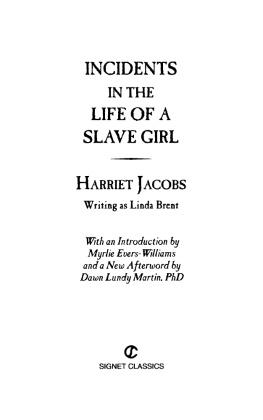

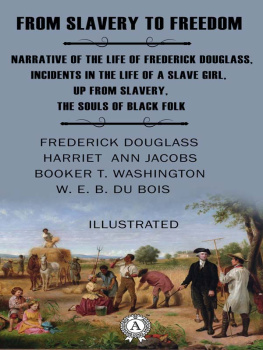
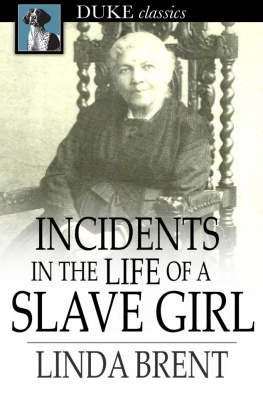
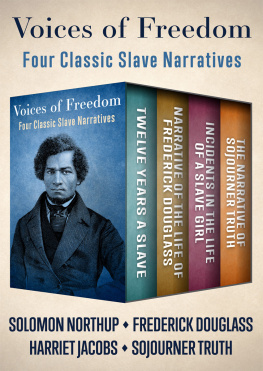
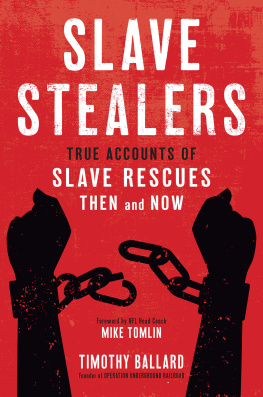
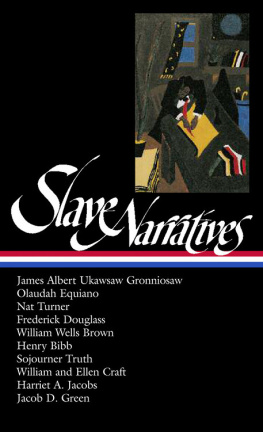



 REGISTERED TRADEMARK MARCA REGISTRADA
REGISTERED TRADEMARK MARCA REGISTRADA